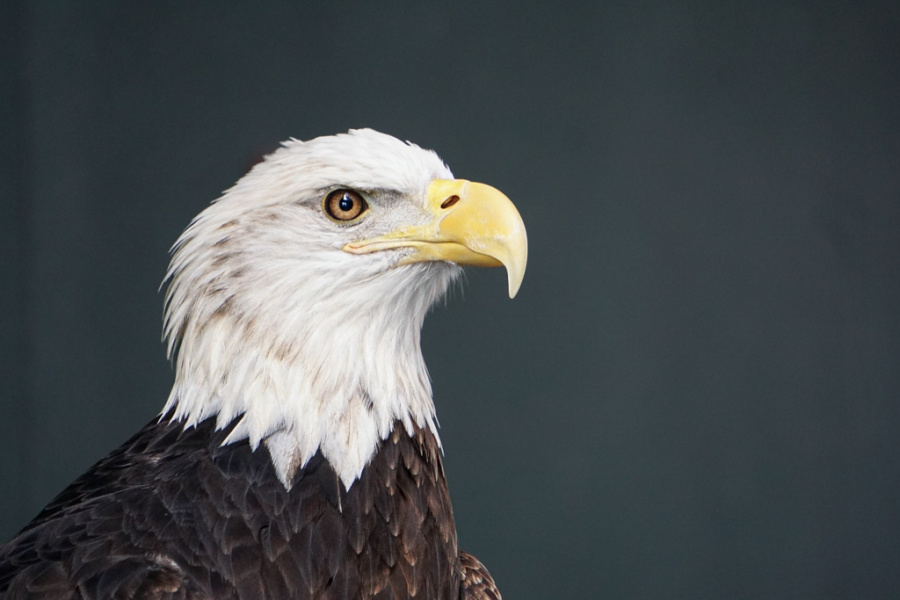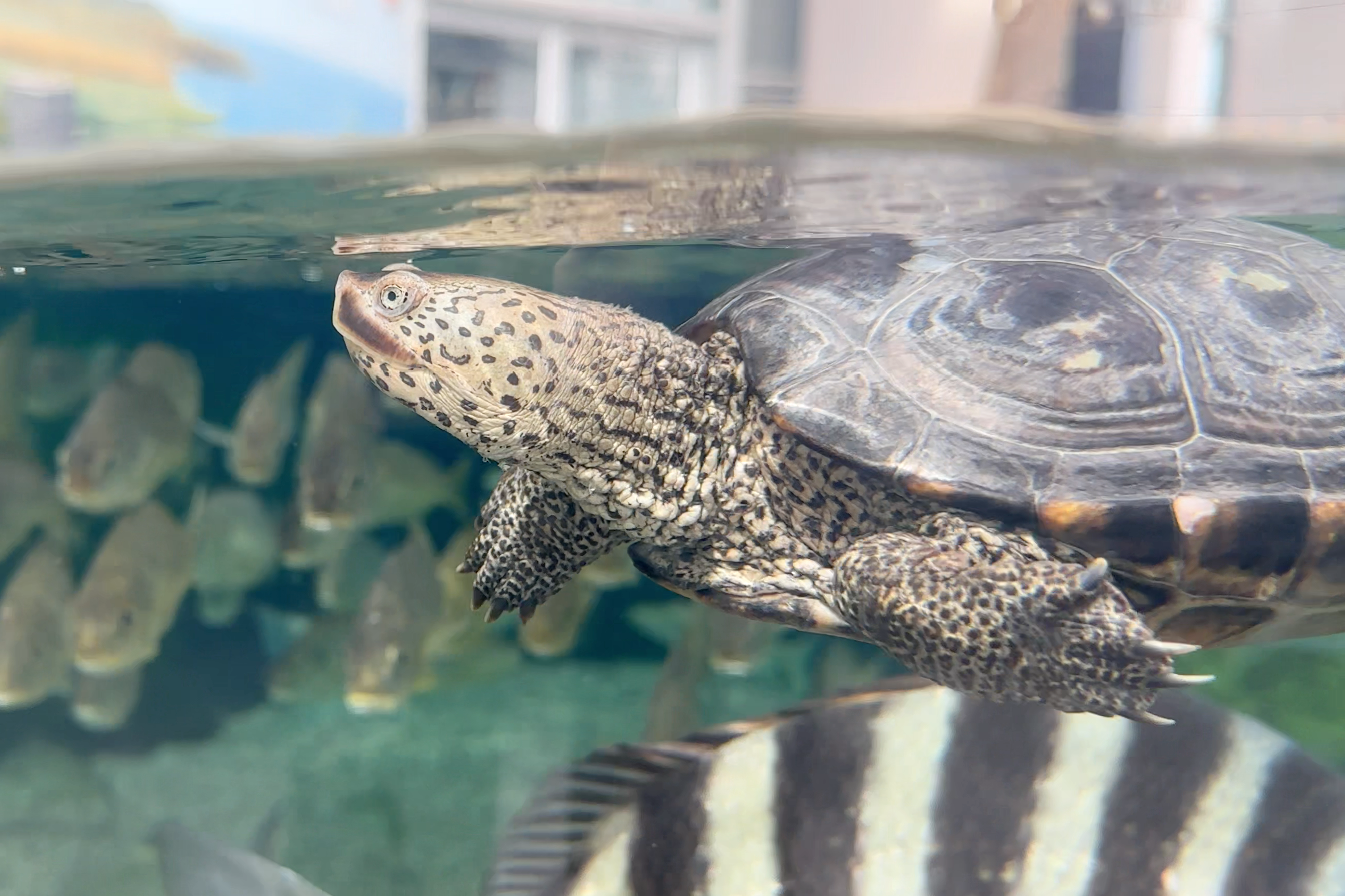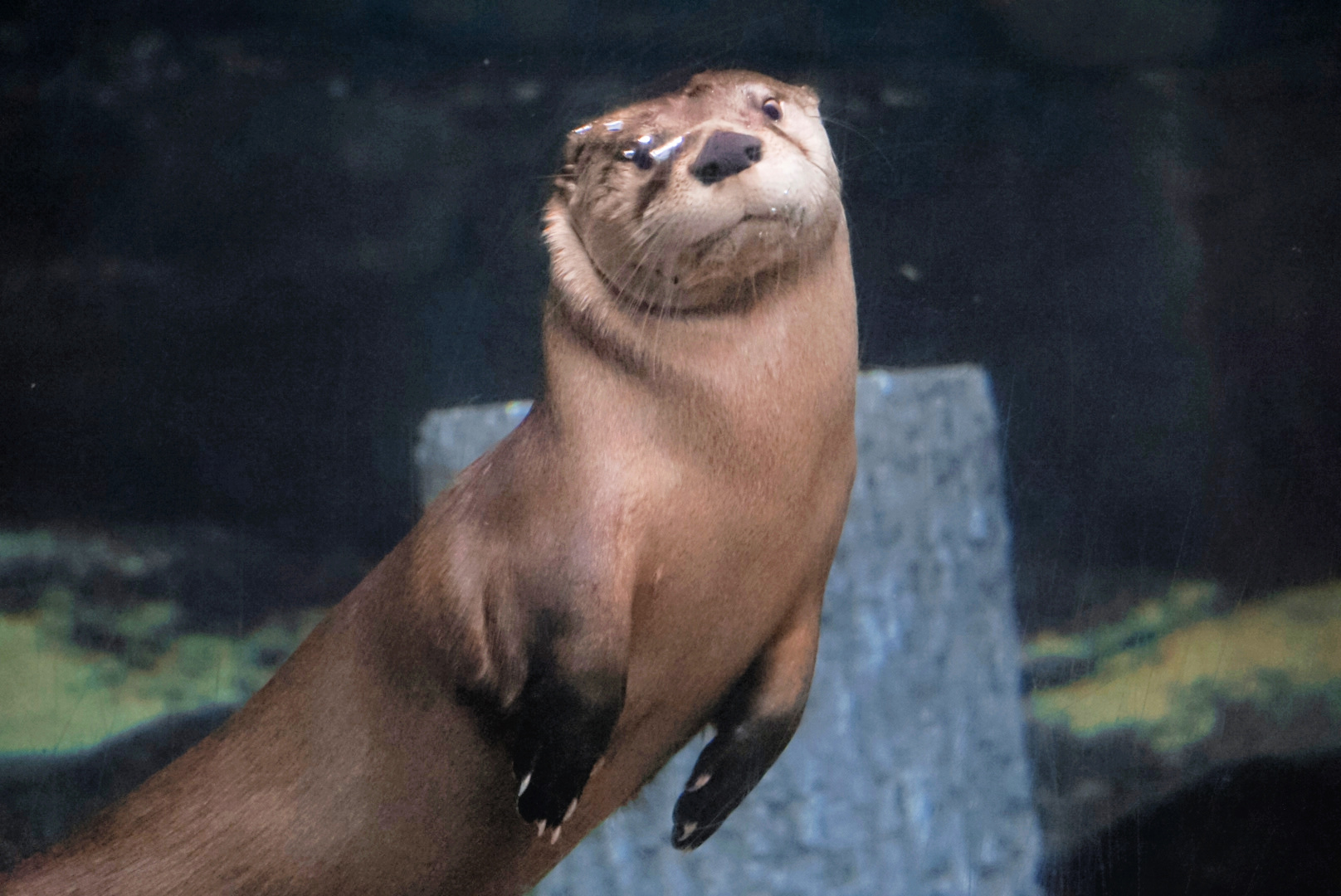Test your students at the Aquarium with Onsite Activities! Ahead of your visit, reserve an Exhibit Activity or Discovery Bin, or print out one of our educational Scavenger Hunts to make your time at the Aquarium even more engaging. Onsite activities are tailored by grade to accommodate all age levels and align with South Carolina science standards.

Discovery Bin
Our Discovery Bin is full of artifacts ranging from the mountains to the sea and can be shown to students along your Aquarium tour. Students get a hands-on look at different props such as shark teeth, a loggerhead sea turtle skull and stingray barbs. Teachers can reserve a Discovery Bin by adding it to your reservation when speaking to the Customer Service Center (843) 577-3474. Homeschool families can check one out by stopping by the Information Desk upon arrival. Discovery Bins are designed for small groups and families.
Before you arrive, don’t forget to prepare by reading about the discovery bin!
Mountains to the Sea Discovery Bin
Discovery Bin Instructions
Discovery Bin Teacher Cards

Exhibit Activities
The Aquarium has five different Exhibit Activities you can do with your students during your visit. Each activity is geared toward a specific grade level and covers science standards. Teachers can reserve an Exhibit Activity by adding it to your reservation when speaking to the Customer Service Center (843) 577-3474. Homeschool families can check one out by stopping by the Information Desk upon arrival. Exhibit Activities are designed for up to 8–10 students and will take 15–20 minutes per small group.
Don’t forget to prepare before you arrive by reading the activity outline!
Plants Are Cool
Students will explore the Aquarium and locate the native plant species throughout. Lead them through labeling plant parts and functions. They will discover that all living things need air, nutrients/food, water, space and shelter to survive in a habitat. Students will learn about the process of photosynthesis.
Life Cycles of the Saltmarsh
Students will build life cycles of the plants and animals of the saltmarsh. They will learn about spartina grass, red drum fish, white ibis birds, oysters and diamondback terrapins. They will also learn about the adaptations of each of these organisms.
Ecosystem Teamwork
Students will learn what an ecosystem is and how both living and nonliving factors make up an ecosystem, and how these factors work together to provide a safe habitat. This activity takes place in the Mountain Forest.
Animal Adaptations
This activity is done throughout their visit from the mountains to the sea (Mountain Forest, Piedmont, Coastal Plain, Saltmarsh Aviary, Coast and the Great Ocean Tank). Students will encounter many everyday objects as they walk through the exhibits and determine how that object is similar to the adaptations of organisms that they see on exhibit.
Food Chains
Students will build food chains at the Saltmarsh Aviary and the Great Ocean Tank. They will determine what happens if levels of the food chain are missing and brainstorm ways to keep those ecosystems clean.

Scavenger Hunts
Make your journey through the Aquarium even more fun and dynamic by printing out these STEM-based Scavenger Hunts.
Short Scavenger Hunts
These will take 30 minutes to an hour to complete.
Grades Pre-K–2
Seek-and-Find Scavenger Hunt
Grades 3–5
Travel Brochure Scavenger Hunt
Travel Brochure Scavenger Hunt Answer Key
Grades 6–8
Selfie Scavenger Hunt
Selfie Scavenger Hunt Answer Key
Grades 9–12
Selfie Scavenger Hunt
Selfie Scavenger Hunt Answer Key
Long Scavenger Hunts
These will take 1–2 hours to complete.
Grades K-2
Scavenger Hunt
Scavenger Hunt Answer Key
Grades 3–5
Scavenger Hunt
Scavenger Hunt Answer Key
Grades 6–8
Scavenger Hunt
Scavenger Hunt Answer Key
Grades 9–12
Scavenger Hunt
Scavenger Hunt Answer Key

